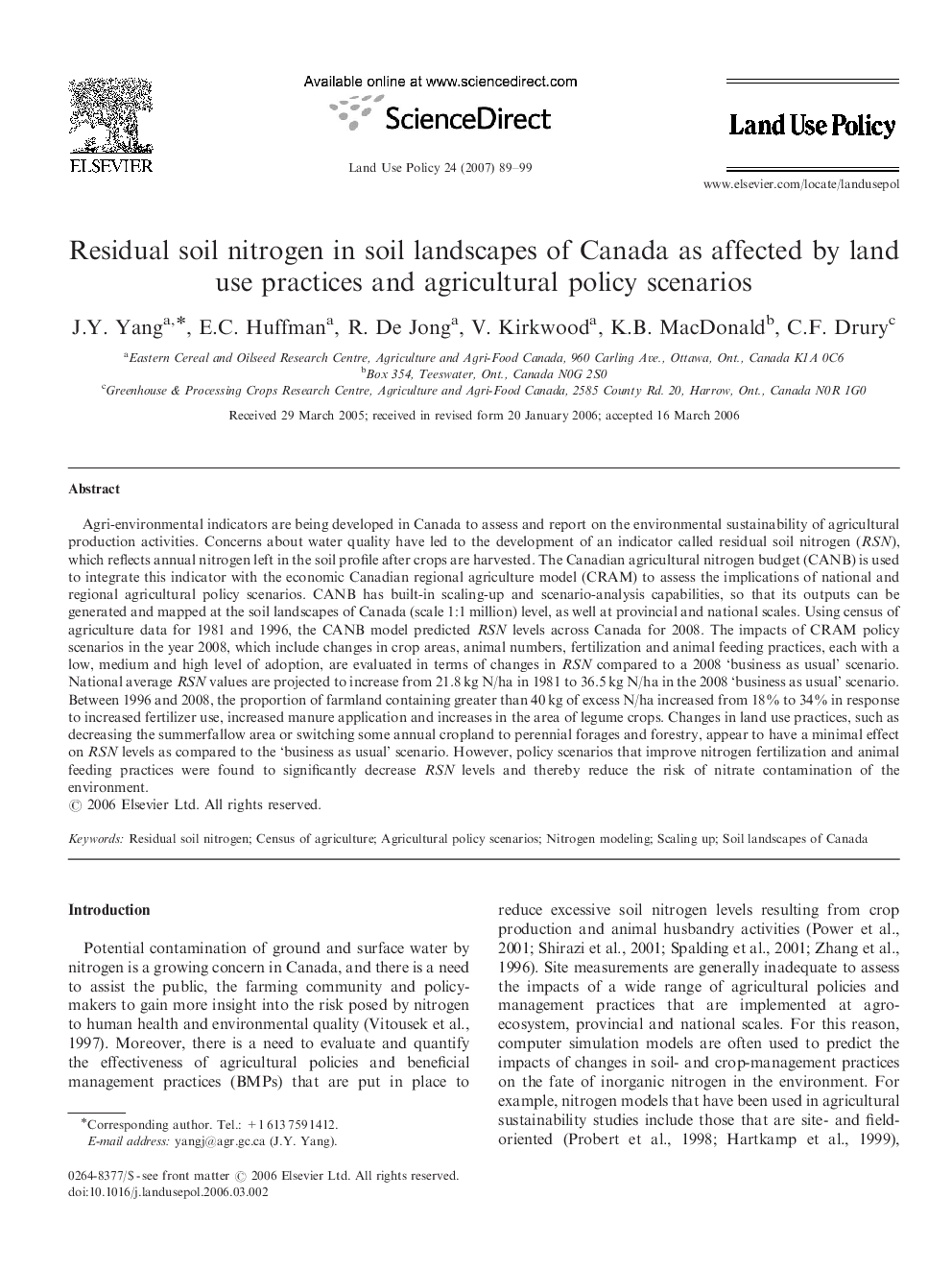| کد مقاله | کد نشریه | سال انتشار | مقاله انگلیسی | نسخه تمام متن |
|---|---|---|---|---|
| 93848 | 160154 | 2007 | 11 صفحه PDF | دانلود رایگان |

Agri-environmental indicators are being developed in Canada to assess and report on the environmental sustainability of agricultural production activities. Concerns about water quality have led to the development of an indicator called residual soil nitrogen (RSN), which reflects annual nitrogen left in the soil profile after crops are harvested. The Canadian agricultural nitrogen budget (CANB) is used to integrate this indicator with the economic Canadian regional agriculture model (CRAM) to assess the implications of national and regional agricultural policy scenarios. CANB has built-in scaling-up and scenario-analysis capabilities, so that its outputs can be generated and mapped at the soil landscapes of Canada (scale 1:1 million) level, as well at provincial and national scales. Using census of agriculture data for 1981 and 1996, the CANB model predicted RSN levels across Canada for 2008. The impacts of CRAM policy scenarios in the year 2008, which include changes in crop areas, animal numbers, fertilization and animal feeding practices, each with a low, medium and high level of adoption, are evaluated in terms of changes in RSN compared to a 2008 ‘business as usual’ scenario. National average RSN values are projected to increase from 21.8 kg N/ha in 1981 to 36.5 kg N/ha in the 2008 ‘business as usual’ scenario. Between 1996 and 2008, the proportion of farmland containing greater than 40 kg of excess N/ha increased from 18% to 34% in response to increased fertilizer use, increased manure application and increases in the area of legume crops. Changes in land use practices, such as decreasing the summerfallow area or switching some annual cropland to perennial forages and forestry, appear to have a minimal effect on RSN levels as compared to the ‘business as usual’ scenario. However, policy scenarios that improve nitrogen fertilization and animal feeding practices were found to significantly decrease RSN levels and thereby reduce the risk of nitrate contamination of the environment.
Journal: Land Use Policy - Volume 24, Issue 1, January 2007, Pages 89–99